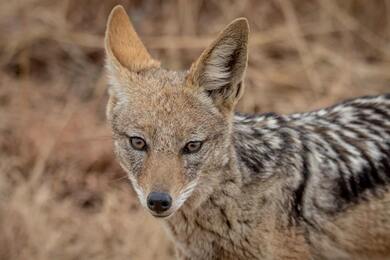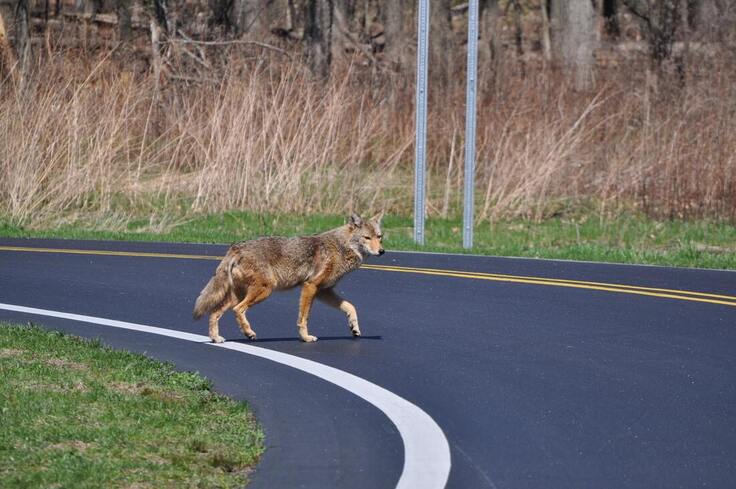 Management strategies for coyotes should start with understanding the true threat they can be when it comes to air safety. The habitat that airports provide for small birds, and mammals is a huge attractant for coyotes. These animals are extremely adaptive to their ever-changing habitat. Coyotes are members of the Canidae family and share a lot of the same traits of their relatives: wolves, dogs, foxes, and jackals. They have narrow, elongated snouts, lean bodies, yellow eyes, bushy tails, and thick fur. Coyotes are about as big as medium-size dogs, though they are smaller than wolves. They are 32 to 37 inches (81 to 94 centimeters) from head to rump, according to National Geographic. Their tail adds another 16 inches (41 cm) to their length. Coyotes typically weigh about 20 to 50 lbs. (9 to 23 kilograms) This species can thrive in forests, farmlands, prairies, mountains, deserts, and swamplands. Coyote populations are known to exist in 46 states, and it is possible that coyotes will soon be present in all states except Hawaii. Coyotes can adapt to populated areas, and thousands of coyotes living within the city limits of Los Angeles (see story) have led to severe management problems. And its not just Los Angeles its everywhere! In the airport wildlife management industry, we at Loomacres have had to delegate more and more resources to coyote control. They are extremely resilient and should not be taken lightly when trying to trap or depredate. So here are some tips for trapping coyotes on airports
These are just a few techniques we have adapted and found successful when trapping coyotes on airports. If you have more techniques you would like to share or for more information, please fill out the fields below. Loomacres - 800-243-1462 Bringing Wildlife Management to a Higher Level ©
0 Comments
Leave a Reply. |
Sales & Marketing
|

 RSS Feed
RSS Feed